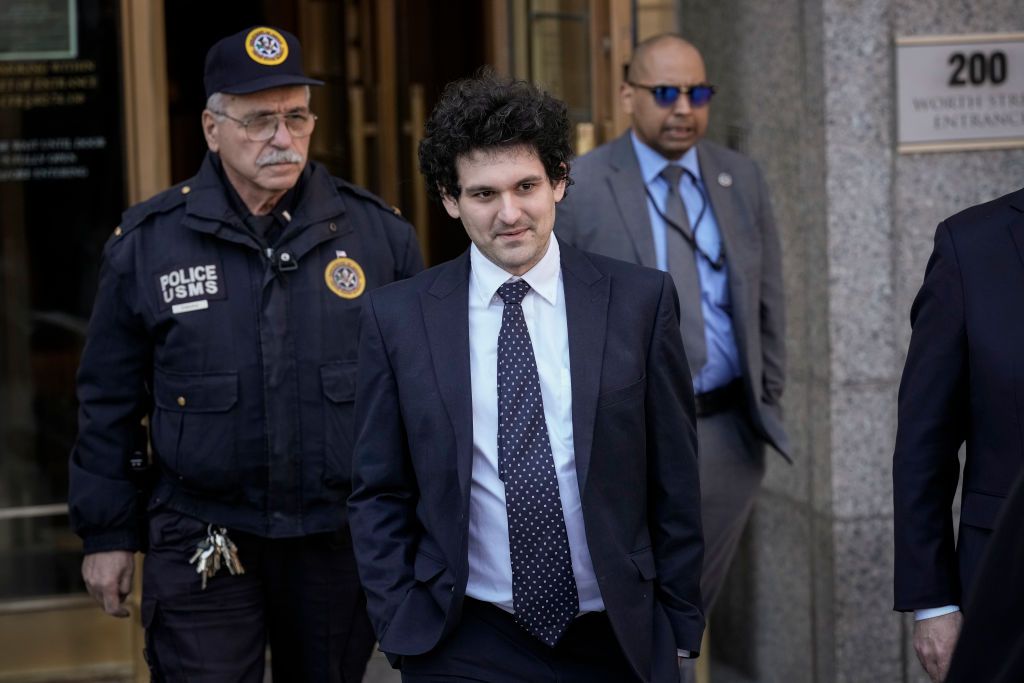Key Takeaways
- Former FTX CEO Sam Bankman-Fried was sentenced to 25 years in prison on Thursday for his role in defrauding customers of the bankrupt crypto exchange.
- Bankman-Fried also faces forfeiture of more than $11 billion, which the government could use to compensate FTX customers, a judge ruled.
- FTX collapsed in Nov. 2022 after it was unable to meet demands for customer withdrawals.
- The fraud involved the commingling of funds between FTX and closely related investment firm Alameda Research.
- FTX customers are expected to receive the dollar value of their holdings on the exchange from around the time of the collapse; however, this means they’ll miss out on the increase in value of their crypto holdings since that time.
Sam Bankman-Fried, former CEO of defunct crypto exchange FTX, has been sentenced to a 25-year prison sentence related to the fraudulent use of customer funds at the exchange.
In addition to spending that time in jail, Bankman-Fried also faces 3 years of supervised release as well as forfeiture of over $11 billion, that the court authorized to go towards making FTX customers whole.
“There are serious consequences for defrauding customers and investors. Anyone who believes they can hide their financial crimes behind wealth and power, or behind a shiny new thing they claim no one else is smart enough to understand, should think twice,” said Attorney General Merrick Garland.
Prosecutors had previously argued for Bankman-Fried to receive up to 50 years in prison. Meanwhile, Bankman-Fried’s defense lawyers were seeking a sentence closer to five or seven years.
Bankman-Fried was found guilty for his role in the crypto fraud last November. FTX had collapsed roughly a year prior to that verdict after some irregularities were revealed regarding the crypto holdings of its closely associated investment firm Alameda Research.
This eventually led to mass withdrawals from the exchange, which FTX was unable to process. It was eventually revealed that commingling of funds between FTX and Alameda Research had occurred, and customer withdrawals were unable to be processed due to those funds being used for alternative purposes. Customer loss was pegged at $8 billion.
“The scale of his crimes is measured not just by the amount of money that was stolen, but by the extraordinary harm caused to victims, who in some cases had their life savings wiped out overnight,” U.S. Attorney Damian Williams said, adding that today’s sentence, “will prevent the defendant from ever again committing fraud and is an important message to others who might be tempted to engage in financial crimes that justice will be swift, and the consequences will be severe.”
While an FTX bankruptcy plan is said to provide customers with the return of at least 90% of their money, the reality is much of customers’ balances were held in various crypto assets, which have skyrocketed in value since the exchange’s collapse. The bankruptcy plan locks in the dollar-denominated value of those holdings from around the time of the exchange’s collapse, so customers will miss out on the potential gains made in the crypto bull market since that time.
According to Inner City Press, Bankman-Fried’s defense lawyers tried to argue that customers will be paid back in full in an attempt to gain some leniency during the sentencing proceedings; however, this argument was rejected by Judge Kaplan, as this is only true in dollar-denominated terms. “A fortuitous run-up in the value of some cryptocurrencies bears no relation to the gravity of the crimes that were committed,” Kaplan was quoted as saying.
Update Mar. 28, 2024: This story has been updated with more details of Bankman-Fried’s verdict and comments from the U.S. Department of Justice.
Correction Mar. 28, 2024: This story has been corrected to reflect the accurate prison sentence for Bankman-Fried.
This news is republished from another source. You can check the original article here

